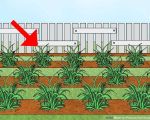
Best Tips for Mowing Tall Grass Without Damaging Your Lawn
As someone who’s lived in the Midwest for most of my life, I know all too well how fast grass can get out of hand. One rainy week and boom—your neatly trimmed lawn looks like a forgotten pasture. A couple of years back, I came home from a three-week road trip to find my front yard waist-high in grass. It was a disaster, but I learned a lot from it. Let me walk you through everything I’ve learned about mowing tall grass the right way.
1. Don’t Rush – Tall Grass Needs Gradual Cutting
It’s tempting to mow tall grass down in one go, but that’s a fast track to ruining your mower—and your lawn. Grass needs to be cut in stages. I learned this the hard way when I tried to chop it all at once and ended up with a burnt-out mower blade and a yellowed lawn. The one-third rule is key: never cut more than one-third of the grass height at once.
If your lawn is 12 inches tall, set your mower deck to its highest level and trim it down to about 8 inches. Wait a few days before lowering the deck and cutting it again. It might take three or four passes over a couple of weeks, but the result will be a lush, healthy lawn that recovers beautifully.
2. Sharpen Your Mower Blades Before You Start
This is something I used to overlook. Dull blades tear the grass instead of cutting it cleanly, which stresses the plant and leads to brown tips. I now make it a ritual to sharpen my blades at the start of every mowing season and after any tough job like cutting through overgrowth. A sharp blade makes a clean cut, which helps the grass heal faster and look better.
3. Use the Right Mower and Equipment
There’s no one-size-fits-all when it comes to mowing tall grass. If your yard is the size of a football field and the grass is chest-high, a standard push mower won’t cut it—literally. In these cases, I’ve rented a brush mower or a weed trimmer with a heavy-duty blade to do the initial knockdown. Once the height is manageable, then I go in with my regular mower for finishing.
Also, don’t forget protective gear. Tall grass can hide sticks, rocks, and even critters. I wear safety goggles, long pants, and boots every time I tackle overgrown areas.
4. Always Mow Dry Grass for Better Results
Mowing wet grass is not only frustrating—it’s harmful. Wet blades clump, clog your mower, and tear more easily. One time I mowed in the morning after a heavy dew and ended up with clumps that looked like hay bales. Worse, those clumps smothered patches of grass, leading to ugly brown spots.
Wait until the afternoon or the next dry day. Dry grass stands up straight, cuts cleanly, and reduces the risk of fungal infections.
5. Clean Up Debris First to Protect Your Mower
When grass gets tall, you can bet there’s more than grass in there. I’ve found everything from soda cans to soccer balls in my overgrown backyard. It’s essential to do a quick walk-through before you mow. Pick up any visible debris and use a rake to spot items buried in the grass.
Trust me, hitting a rock or a metal toy with your mower can lead to costly repairs—or worse, injuries. Take ten minutes to inspect before you start.
6. Don't Forget to Mulch or Bag the Clippings
Tall grass equals heavy clippings, and if you let them lie, they’ll suffocate the lawn underneath. I alternate between mulching and bagging depending on the condition of the grass. If it’s super thick, I bag it on the first pass and then mulch on the second go. You can even compost the clippings or use them as mulch in your garden once they dry out a bit.
7. Water and Fertilize After Mowing
After giving your grass a serious haircut, it needs recovery time. I like to water lightly a day or two after mowing. Once the lawn is stable, I apply a slow-release fertilizer to boost growth. It helps the grass bounce back quicker and look even greener than before.
8. Stick to a Regular Mowing Schedule Going Forward
Letting grass get too tall is an invitation for pests, mold, and weeds. After my big lawn recovery project, I set a calendar alert to mow once a week. Life gets busy, but regular maintenance keeps the lawn healthy and saves you from having to go through the whole tall-grass battle again.
And if things ever get out of hand again, I know exactly what to do. Better yet, I now recommend checking out professionals when you don’t have time. If you're in the U.S. and need help, we recommend visiting our site at Lawn Care Services for customized support from local experts.








